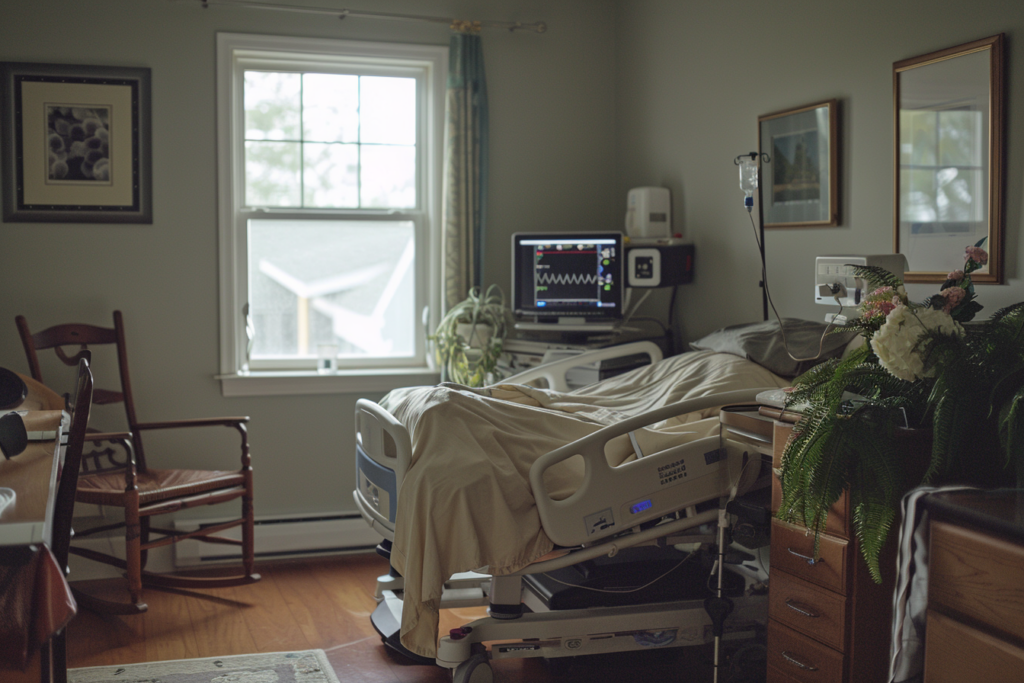How to assess the benefits of extending hospital care into homes
As organizations look to achieve the potential benefits of utilizing the home for care, careful analysis and planning remain essential to success.

According to Leff et al., “Hospital at home provides hospital-level care in the home as a substitute for traditional hospital care.” With the rapid advancement of technology and remote monitoring, the concept of hospital-at-home care is gaining momentum in the healthcare industry.
This innovative model provides hospital-level care to patients in their own homes, enabling a more comfortable and familiar setting, while also reducing costs and increasing efficiency for healthcare providers.
Toal, Ryan, and Ryan wrote that, “The hospital-at-home program was first introduced in the 1990s as a way to provide care for patients who did not require traditional hospitalization but still needed close medical supervision.” Since then, there has been a significant growth in its utilization because of its numerous benefits for both patients and providers.
One of the main advantages of hospital-at-home programs is improved patient outcomes. Studies have shown that patients who receive care at home have lower rates of infection, reduced risk of falls, decreased medication errors and higher levels of satisfaction, compared with those in traditional hospital settings. Being in their own familiar environment can also alleviate stress and anxiety for patients, leading to faster recovery times.
Moreover, hospital-at-home programs can greatly benefit elderly patients or those with chronic conditions who may struggle with mobility or transportation. By receiving care at home, they can avoid the physical strain and potential exposure to illnesses that comes from traveling to a hospital or clinic.
For healthcare providers, implementing a hospital-at-home program can be an effective solution to challenges such as limited bed capacity and workforce shortages. By freeing up beds in hospitals for more critical cases, this model helps reduce wait times for patients who truly need intensive care. It also enables hospitals to serve more patients without needing additional physical resources.
Rothman and others noted that “Hospital admissions are increasing as staffing challenges remain exacerbated by workforce departures, increased labor costs and facility closures.” Additionally, hospitals that offer these programs have reported cost savings ranging from 19 percent to 30 percent, mainly a result of reduced lengths of stay and lower overhead costs associated with running a traditional hospital setting. With healthcare costs continuing to rise globally, implementing cost-effective solutions like hospital-at-home programs is becoming increasingly important.
These programs come with their own set of challenges and considerations. First and foremost is ensuring that the patient's home can accommodate their medical needs. Providers must assess if the home has adequate space for equipment and whether the caregiver or family members can provide necessary support.
Hospitals must also have reliable remote monitoring technology in place to continuously track patients' vital signs and provide real-time updates to healthcare professionals. This may require significant investments in equipment and training for staff.
Another crucial aspect to consider is the level of care that can be provided at home, compared with a traditional hospital setting. While most non-emergency conditions can be treated effectively at home, there are certain situations that may still require a hospital stay. Healthcare providers must carefully evaluate each patient's condition and determine if they are suitable candidates for this type of care.
Some leading provider organizations have already successfully implemented hospital-at-home programs, providing valuable lessons for others looking to adopt this model. One key lesson is the importance of clear communication between all parties involved, including patients, caregivers and healthcare providers.
Building trust with patients is also essential, as some may initially feel uncomfortable receiving care in their homes instead of a traditional hospital setting. Ensuring transparent communication about the program's benefits and addressing any concerns promptly can help build trust and increase patient satisfaction.
Lastly, proper staff training is also critical for successful implementation. Hospital-at-home programs often involve interdisciplinary teams from different departments working together remotely. Thus, it is crucial to ensure that everyone understands their roles and responsibilities within this new model of care delivery.
As technology continues to advance rapidly, hospital-at-home programs present a promising solution for improving patient outcomes while maximizing efficiency for healthcare providers. By expanding these programs, providers can extend their capacity to serve more patients while also reducing costs associated with traditional hospital stays. However, careful planning are necessary to address potential challenges and ensure successful implementation.
With proper execution, hospital-at-home programs have the potential to revolutionize the way providers deliver care and improve the overall healthcare experience for all parties involved.
William Triplett is a fellow of the American College of Health Data Management, a technology advisor for the U.S. Department of Homeland Security and an adjunct faculty member on health information technology for the University of Maryland-Baltimore County. His profile can be found here.
